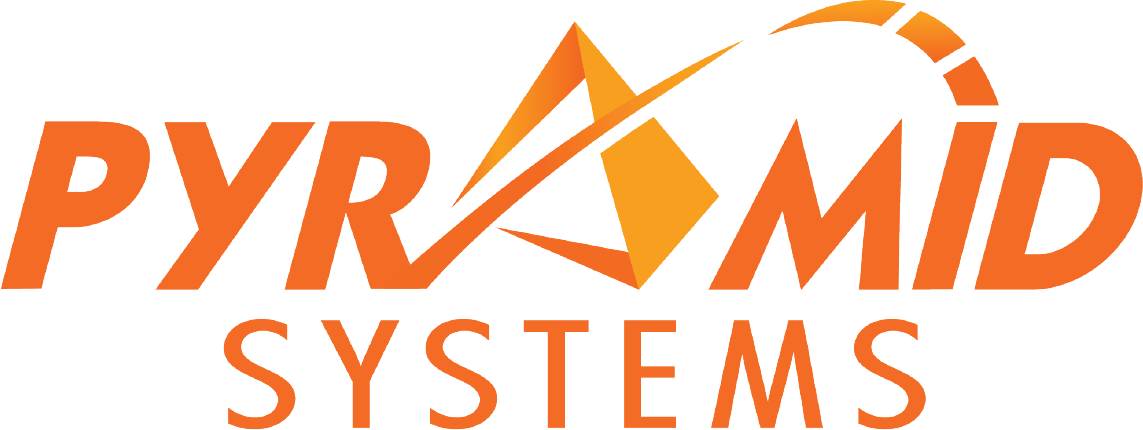By: Chuck Harris

Introduction
While serving in multiple roles in both the government and private sector, I developed a deep level of empathy and respect for contract and program management professionals. These experts consistently meet mission priorities while ensuring legal reliability, which is a delicate and difficult balance to strike. Anyone who has walked in their shoes gets it!
While in the U.S. Air Force, I had the privilege of serving as a Contracting Officer (CO) with the highest-level Department of Defense certification in contracting. I worked in the Office of Federal Procurement Policy, deployed strategic IT systems as a Program Manager (PM) and served as a Commander for the Defense Contract Management Agency. In the private sector, I’ve been a PM and a Vice President (VP) of Contracts, before my current service as the Senior VP for Corporate Operations at Pyramid Systems.
Motivated by the above experiences and association with colleagues, who have an insatiable appetite for excellence, I’m compelled to share agile-based contracting strategies that can help contracting professionals achieve optimal results faster with technology solution procurements.
Let’s start the conversation at the intersection between traditional and agile approaches. Then I’ll offer some tips for integrating agile principles and practices into our contracting process while remaining compliant with the Federal Acquisition Regulation (FAR).
Traditional Contracting Can Make Procuring Technology Solutions Challenging
A few key elements make procuring technology solutions using traditional contracting methodologies particularly challenging. They include:
Extensive requirements. The process of pulling together project requirements is long and tedious. Plus, identifying and defining every conceivable requirement is close to impossible.
Fixed parameters. By design, traditional contracts prescribe a very specific set of expectations and requirements. As such, they fix the project within the originally conceived parameters and don’t leave room for making design changes based on user feedback or business process inefficiencies.
Slow process. Waterfall software acquisition contracts typically take 12 to 24 months to be awarded. At the intersection of traditional and agile approaches, I’ve observed that “agile” procurements managed with a “Waterfall mind-set” tend to take the same amount of time. Let me add quickly that this is a team sport—both the government and the private sector must work together as partners.
The Dilemma: While technology moves fast, by the time traditional contracts are signed, many of the requirements and associated technologies are obsolete.
Due to these inherent process inefficiencies, the countless and diligent hours logged by COs often lead to less than ideal technology solutions. That’s frustrating!
Agile Contracting Gets Better Results More Quickly!
The job of a CO is to ensure that the mission is accomplished on a foundation of legal reliability and FAR compliance. Within those bounds, there’s plenty of flexibility to modernize and simplify contracting practices. At Pyramid, we believe the best way to do that is to apply agile principles and practices to contracting—we call it Agile-Based Contracting (ABC).
While agile has its roots in software development, it has since been adopted by all types of organizations and sectors. At its core, it’s a step-by-step approach that enables requirements and solutions to evolve through collaboration between self-organizing, cross-functional teams. Agile emerged as a way to keep pace with today’s ever-changing, complex marketplace and is a perfect tool for helping government contracting achieve customer satisfaction, get the best value for the time and money expended, and obtain innovative technology solutions that advance the government’s mission.

Tips for Implementing Agile-Based Contracting
Here are some practical tips for bringing agile into your contracting ecosystem:
Take advantage of industry expertise
During the acquisition planning process, reach out to industry experts to help define the solutions that will best address your technical and business challenges and desired outcomes. This collaborative approach means COs aren’t expected to identify and catalog every solution requirement or establish the optimal solution for their needs. Some of the ways COs can foster industry collaboration include:
- Reverse industry day events
- Request for Information (RFI) solicitations
- Meetings with industry partners for knowledge mining
- Association forums and events
This agile approach has been shown to produce better results, and it cultivates the collaborative relationship that will be so essential once the project kicks off.
Use an agile contract structure
When it comes time to developing your contract, it’s critical to build in a level of flexibility that will allow for pivots and design changes as articulated by the Government Accountability Office (GAO). The guidance suggests, and time has proven that complementing traditional Firm Fixed Price (FFP) contract line item numbers (CLINs) with Time and Material (T&M) surge CLINS provide the necessary flexibility. This combined structure allows for unexpected developments, such as when an opportunity for improvement is discovered during the technology implementation process that wasn’t recognized when the contract was created.
With the traditional FFP-only approach, if the need for flexibility is discovered midway through a contract, the CO would likely resort to a less efficient and more time-consuming contract modification process. With the new structure of FFP + T&M surge CLINs, the CO can quickly implement the optional T&M surge CLINs that are already on contract. The process is speedier, easier to manage, and ensures that the government gets the best possible solution for its money and effort.
Use best-value contracts
Government organizations have often relied on Lowest Price Technically Acceptable (LPTA) contracts as the primary method for purchases. There are various drawbacks to the LPTA approach, but the most important has to do with potential inadequacies of the product received when it comes to quality, reliability, and service. The scenario for an LPTA contract often plays out as follows:
- The lowest bidder wins with very low cost to the government.
- The winning vendor hires low-cost, underqualified project members to save money and stay on budget.
- The government does not get the expected results because the project team is underqualified.
- Due to the unmet expectations of the vendor, future options do not get exercised, and the contract must be rebid.
- The government spends money to go through the cycle of finding a new vendor.
A better approach is to use a best value contract award. This will help ensure that you get a product or service that meets your expectations, while also balancing multiple factors regarding cost, quality, risk, and more.
Find a vendor with an “agile back office”
Look for vendors that have an agile back office. A typical back office consists of corporate operations functions, such as recruiting, human resources, contracts, accounting, and IT, that support day-to-day operations. When those departments are not agile, new requests or projects often have to go through a series of channels before they are addressed.
An agile back office has the systems, processes, and culture to support any challenges presented as part of delivery, whether they are planned, unplanned, or emergency surge needs. Agile back offices follow established processes built within a collaborative environment, use industry-recognized tools, and are staffed with mature leaders with strong industry backgrounds. As a result, they’re able to react and adapt quickly.
The agility inherent to an agile back office gives it incredible flexibility as these examples demonstrate:
- Agile back offices can handle six-day procurement schedules.
- Small businesses with an agile back office can surge quickly from a 40-person team to a 100-person team to meet unexpected client needs or emergencies.
- A company with an agile back office can innovate and turn around a solution in one month, turning around the proposal and contract in just a day if necessary.

What Challenges Are You Facing?
I encourage you to reach out to me via LinkedIn to discuss the challenges you are facing in your procurement office. Procurement is my passion, and I’d love to collaborate and help you come up with agile contracting solutions that will advance your procurement shop.
Copyright © 2019 Pyramid Systems, Inc.
